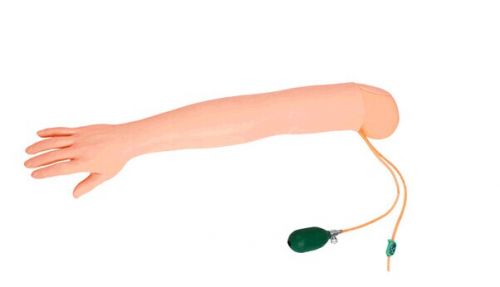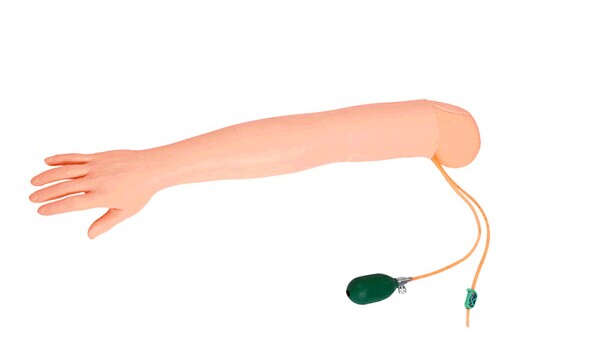ADA MED SUPPLY LIMITED
Phone:+86 19937901373
Tel:+86-0379-65160607
Email:adaanatomy@adaanatomy.com

Article tag: Arterial puncture arm model arterial puncture model

It is an important part of medical education and training to practice the arterial puncture arm model, which helps medical students and clinical staff to master the correct arterial puncture technique. Here is a detailed step-by-step guide on how to practice using the arterial puncture arm model:

1. Preparation
Check the model: Make sure the arterial puncture arm model is in good condition with no obvious breakage or damage. Check that the simulated blood vessels inside the model are intact, with no blockages or leaks.
Prepare tools: Prepare the necessary arterial puncture tools, including the appropriate puncture needle, syringe, disinfectant, cotton swabs, etc. Make sure the tools are clean and sterile.
2. Model preparation
Install an infusion stand: If the model is equipped with an infusion stand, install it as instructed in the manual. This usually involves inserting the infusion stand metal rod vertically into the floor or model base and hanging the infusion bag.
Connect the pipe: Connect the infusion line to a rubber tube at one end of the arm model, making sure the connection is tight and there are no leaks. Another rubber tube in the arm is connected to a rubber ball catheter to simulate arterial pulsation.
3. Simulation of arterial pulsation
Pressurized balloon: The rubber ball is manually pressed to simulate arterial pulsation. Arterial pulsations are simulated at a rate of about 120 beats per minute in order to determine artery position more accurately.
4. Disinfection and positioning
Disinfection: The arm portion of the model is routinely disinfected with disinfectant to simulate real clinical operations.
Location: The location of arterial puncture is determined by simulated arterial pulsation. For example, in the radial artery, it is possible to locate a transverse finger (1-2 cm) of the wrist stripe, 0.5 cm from the outside as the puncture point.
5. Puncture operation
Needle insertion: Fix the pulsation in the left hand, hold the syringe in the right hand, and stab the needle into the simulated blood vessel at a 60° Angle. Pay attention to the feeling of frustration when entering the needle, which is an important indicator to judge whether the needle has entered the blood vessel.
Blood return: If the puncture is successful, you will see simulated blood return through the syringe. This is a sign of a proper piercing.
6. Handle the fault after the operation
Needle withdrawal: Simulate the process of needle withdrawal, taking care to avoid damage to the blood vessel wall.
Wound care: Apply pressure to the puncture site using a cotton swab to stop bleeding and simulate the wound care process.
7. Precautions
Ensure safety: Ensure your own safety and the safety of others at all times throughout the practice.
Follow aseptic procedures: Practice strictly in accordance with aseptic procedures to reduce the risk of infection.
Repeated practice: Improve your arterial puncture skills through repeated practice.